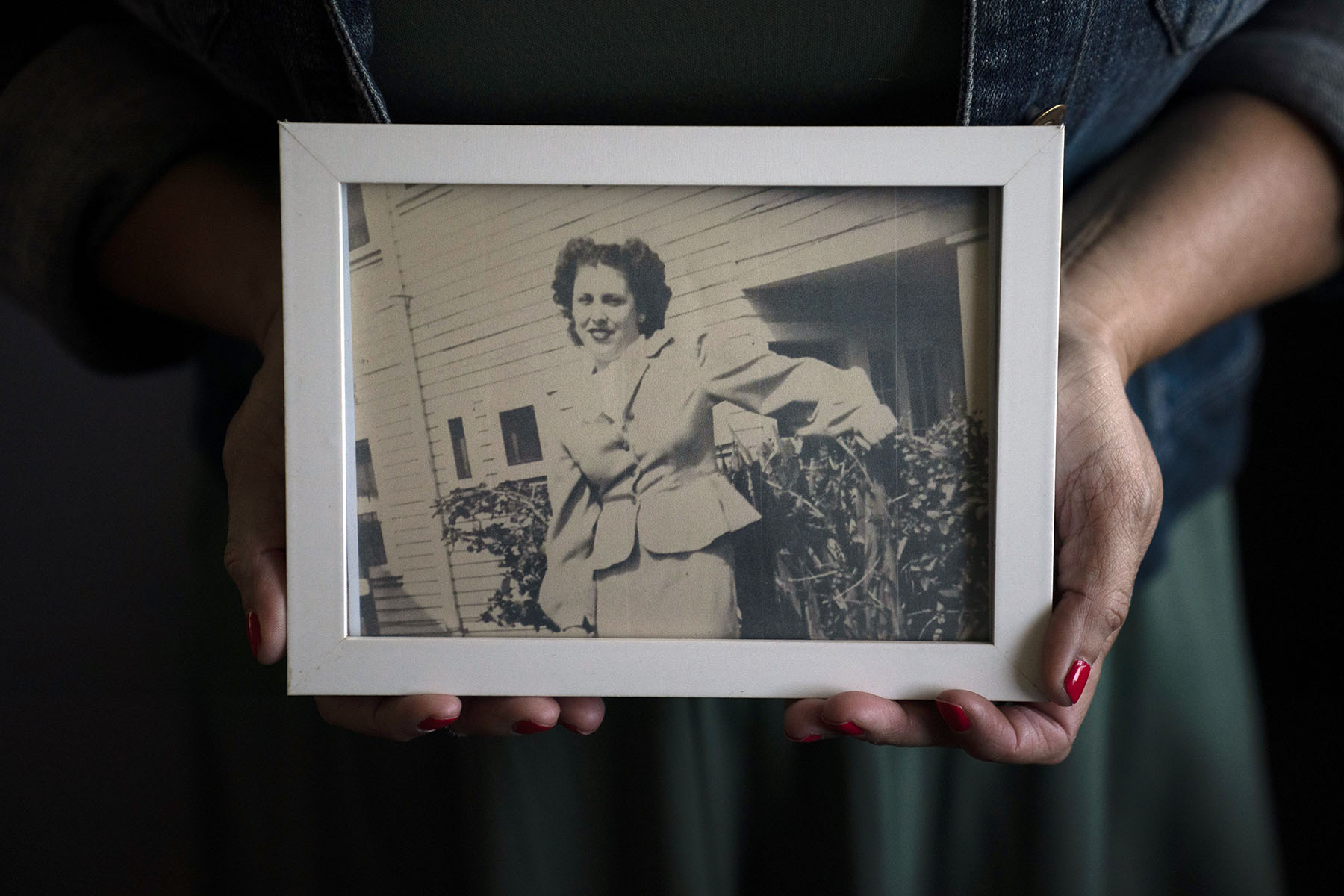We’re telling the untold stories of women, women of color and LGBTQ+ people. Sign up for our daily newsletter.
It was more money than Moonlight Pulido had ever held in her hands. Looking at the check — $15,000 from the state of California — she started to cry.
Pulido, 58, had spent most of the past 30 years incarcerated, only recently being released from prison. She hoped to save most of the money. Having that kind of financial cushion, she knew, could be life-changing.
But as emotional as she was, Pulido couldn’t forget what the money acknowledged, and the other life-altering reason she had received it.
In 2005, while she was in a facility then known as Valley State Prison for Women, a state doctor told Pulido she was at risk for cancer — he told her he had detected two growths inside her, she recalled. Terrified, she agreed he should remove them. But the doctor never told her what that entailed. When Pulido, then 41, woke up from surgery, she discovered her uterus had been removed.
The first person to clarify what had happened, she said, was a nurse she spoke to days later, when Pulido returned to the doctor to have her bandages changed. She couldn’t believe it. Had she known this was what they meant, she wouldn’t have agreed. She could not have any more children.
“I held my tongue and walked the yard just stunned, like somebody had just shot me,” she said.
The money Pulido received is part of California’s effort to reckon with and respond to its past: a history in which more than 20,000 incarcerated people — largely women — underwent involuntary sterilization procedures. The bulk were survivors of a eugenics program in the early 20th century, but hundreds more, including Pulido, were forcibly sterilized in more recent decades, often a result of medical provider bias against incarcerated people. (A state audit from 2013 identified 144 women inmates who underwent such procedures between 2006 and 2010 alone.) Black women and Latinas made up a disproportionate share of those harmed.
-
Read Next:
Under a state law passed in 2021, Californians who can prove they were sterilized without consent while incarcerated in the state’s women’s prisons are eligible for at least $15,000. Applications to the program opened at the beginning of 2022 and will close this December; the state has set aside $4.5 million to distribute.
The California program is part of what could be a burgeoning movement. North Carolina and Virginia both implemented similar programs close to 10 years ago, with varying degrees of success. California’s is the first to include modern-day survivors of forced sterilization.
But the effort to distribute the money has underscored the difficulty of actually implementing this level of large-scale restitution. Researchers in the state estimate that there are still hundreds of Californians who are alive and qualify. With only months left for people to apply, few of those who are likely eligible have received a state payment. According to the California Victims Compensation Board, California has approved only 101 people for compensation. An additional 339 have been denied, and seven cases were closed as incomplete.
“It’s a massive feat to have reparations pass for forced sterilization survivors to begin with,” said Erika Cohn, whose 2020 documentary about the legacy of California’s sterilization program identified almost 1,400 sterilizations in which it was unclear if people had been able to appropriately consent. “Getting calls from folks inside and folks who have gotten out, and hearing what it means to them has been very profound. All of that being said, I absolutely think it’s important to be critical about how this process has rolled out, and what it means for future reparations movements.”
Indeed, actually identifying survivors, and helping them receive compensation has posed an immense logistical challenge. Many do not know the program exists, that they are eligible, and in some cases, that they were sterilized. That is to say nothing of navigating a complex application process, with paperwork requirements that can be incredibly difficult for people to meet.
Pulido learned about California’s reparations program when she met Cohn while still in prison. And when in 2022, Pulido was released, Cohn told her about the state initiative and how to apply.
After that, Pulido went on Facebook and searched for anyone who she knew had been released before her, and who she thought might qualify. She sent details about the program to four other women. Three asked for application materials. As far as she knows, none have received any money. She also suggested it was harder to identify people who were eligible because of the delay between when people were forcibly sterilized — more than a decade ago, in her case — and when the California program launched.
“Had it been put out there a whole lot sooner, a whole lot more people would know,” she said. “But this was years and years and years later.”
The state has acknowledged the difficulty of reaching those who are eligible.
The victim’s compensation board “has worked to reach forced sterilization survivors to make them aware of the compensation available and how to apply,” said Ray Aspuria, a spokesperson for the California Victims Compensation Board. “Because of the duration of time that has passed when involuntary sterilizations may have been conducted, challenges with identifying survivors are many.”
There is still time for more people to apply. Still, it’s unlikely the number of approved recipients will change significantly between now and the year’s end, said Jennifer James, an assistant professor at the University of California, San Francisco, who has researched involuntary sterilization and worked with people applying for the program. The number of people approved for compensation hasn’t changed since at least the end of July.
“For a lot of people, [the state] can’t find documentation that people were in a state-run facility. Or they’re having trouble finding records to validate people were in these facilities because people’s names change, the facilities don’t exist, or there aren’t always good records or documentation,” James said. “There’s all these logistical issues that weren’t fully considered when the program launched.”
California began a marketing campaign earlier this year, leaning on social media posts and advertising on TV, radio and the internet. The victims compensation board has also emailed information about the program to organizations that might work with people who could qualify, Aspuria said. It’s not yet clear if the state will extend the application period past the end of 2023. Depending on how few people apply, the state will divide the remaining allocated money among already-approved survivors.
The current level of outreach likely won’t be enough to find everyone who qualifies and help them navigate the program’s application process. Every day, James added, it’s likely that fewer people who could qualify are still alive. Relatives of people who were sterilized aren’t eligible for the state’s payments.
“It feels like the weight is on the individual to know something happened to them that they may not know happened to them — know this happened and know how to apply and apply in a really short time period,” James said.
The challenges of doing this kind of outreach aren’t unique to California. When North Carolina launched its reparations program, the state estimated that close to 2,000 people were alive who might have qualified. That year, only a fraction applied, and even fewer — about 200 — received payments. When Virginia approved its program, the state knew of only 11 people who were alive and who might qualify.
-
Read Next:
There are manifold challenges in getting people to apply for the program. Many people who were forcibly sterilized may not not trust the state government with their information, James noted. Some may not be able to access needed documentation for their application. Still more may not know what precisely happened to them, fully understand that they qualify, or have support to navigate an often-confusing paperwork process.
“It’s not clear to people what counts,” James said. “People say, ‘Well, I signed a piece of paper. Does that mean I consented?’ And no, it doesn’t mean you had informed consent.”
In some cases, Cohn noted, the state is unable to locate medical records, which are required to prove eligibility. Even prior to the program’s launch, she said, she worked with incarcerated women who did not know they had been sterilized until they first saw their records from the state.
Already the process of reliving what happened can be emotionally draining for people applying to the state program, she added.
“There is a tremendous amount of trauma and shame associated with going to a procedure and learning you’ve been forcibly sterilized,” she said. “That and the emotional impact of fighting against institutions who are as powerful as the California Department of Corrections — whether that’s for records, whether that’s for redress or justice — that toll is tremendous.”
Cohn expressed hope that a program like California’s could lay the groundwork for similar efforts in other states. But to ensure effectiveness, she said, future programs would need to make a concerted effort to consider the people who have been affected, and what it would take to actually provide some form of restitution.
“For there to be real justice, real accountability and real healing, survivors have to be a part of this process, and it has been devastating how survivors have not been invited to the table in a meaningful way,” Cohn said.








